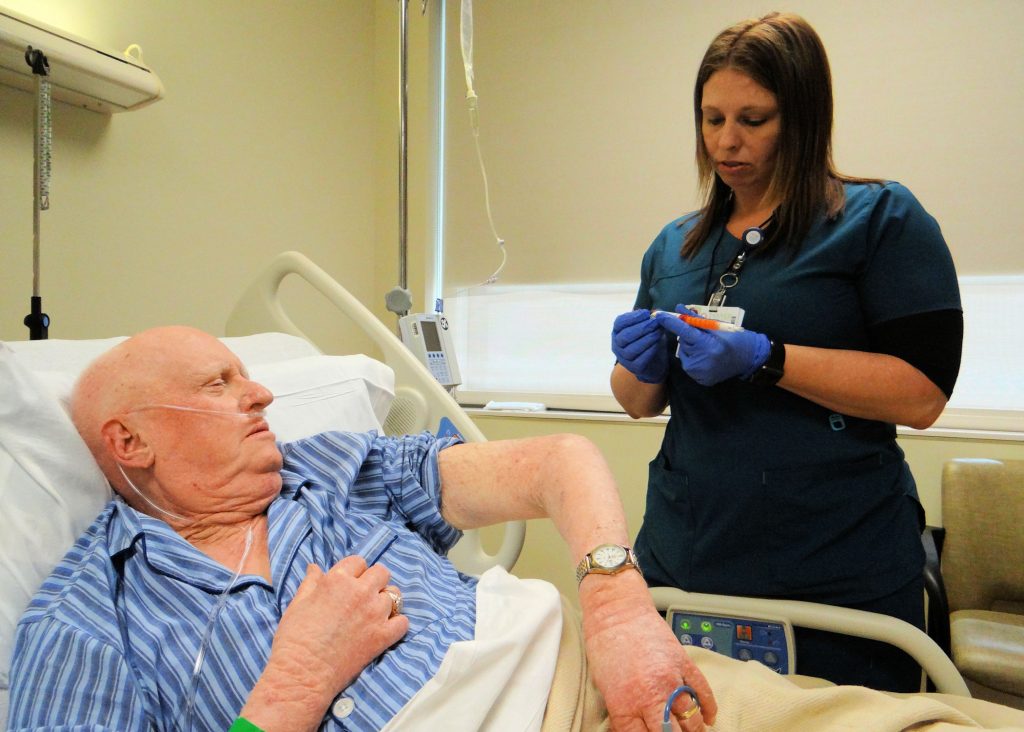
Tanner Health System’s economic impact to the region is almost $912.5 million in revenue for the local economy, according to a new report.
In addition, Tanner incurred almost $37 million in uncompensated costs to provide indigent, charity, other free care and bad debt expenses to the residents in the health system’s service area.
The annual Economic Impact Report from the Georgia Hospital Association (GHA), using data from 2016 — the most recent data available — shows Tanner also created more than 7,200 full-time jobs in the region.
The impact represents an almost $61 million — or more than 7 percent — increase from the previous year’s impact.
“At Tanner, we’re ensuring our health system is ready to serve our region for generations to come,” said Loy Howard, president and CEO of Tanner Health System. “Major facility expansions are underway in Bremen and Villa Rica, we’ve opened a new hospital in Wedowee and we’re constructing a new health pavilion and a new neonatal intensive care unit (NICU) in Carrollton. We’re also cultivating our clinical programs — including accredited Chest Pain centers, primary stroke centers and a growing interventional cardiac care program — and applying to the state to begin offering open-heart surgery right here in our region. Even as many smaller health systems and independent hospitals throughout Georgia are struggling or are being acquired by larger health systems, we’re continuing to grow to better serve our community.”
Since 2012, nine Georgia hospitals have closed, and others — especially those in rural areas — are struggling to keep their doors open. According to the most recent Georgia Department of Community Health Hospital Financial Survey, in 2016, 40 percent of all hospitals in Georgia had negative total margins. Sixty-three percent of rural hospitals in the state lost money that same year.
“When hospitals continually lose funds, it creates an intense financial strain that only worsens year after year,” said Montez Carter, chair of the GHA and chief executive officer of St. Mary’s Health Care System in Athens. “As we have seen over the past few years, eventually, hospitals have no choice but to close when they cannot recoup lost funds. Then, access to care becomes a larger issue.”
A huge strain on hospital finances continues to be the explosive growth of uncompensated care. In 2016, Georgia hospitals absorbed more than $1.8 billion in costs for care that was provided but not paid for. In the same year, Georgia’s uninsured rate was 12 percent, the third highest in the nation behind only Texas and Alaska. Additionally, Medicaid pays Georgia hospitals only about 87 percent of actual costs, meaning hospitals lose 13 cents on every dollar spent treating Medicaid recipients.
That makes Tanner’s growing contribution to the region’s economy that much more impressive.
“We’re fortunate to have a vibrant, locally-operated health system in west Georgia and east Alabama, so we can keep making important decisions regarding the health of our region locally,” Howard said.
Howard said Tanner’s strength lies in its strong relationship with the communities it serves, and the health system’s growing impact reflects its emergence as a true regional healthcare provider.
“The more than $912 million Tanner has been able to turn back into the region’s economy is evidence that people from Carroll, Haralson, Heard, Randolph and beyond continue to trust us with their health,” said Howard. “As a community-based, nonprofit healthcare organization, local support for Tanner translates into investments in new facilities and services, new technology and more jobs for our area. That’s allowing us to grow into a true destination for people throughout west Georgia and east Alabama.”
GHA compiles its annual Economic Impact Report to provide a better view of how Georgia hospitals serve as vital economic engines for local and state economies. Figures provided by the Georgia Department of Community Health are processed through economic multipliers developed by the United States Department of Commerce’s Bureau of Economic Analysis to give a more accurate portrayal of how jobs and revenue generated by hospitals and health systems in Georgia actually impact their local economies.
Based on the hospital’s total direct expenditure — or how much money the hospital spent in 2016 — Tanner Medical Center/Carrollton led the system in economic impact with a total output of almost $521 million injected into the region’s economy. The hospital generated more than 4,350 full-time jobs in the community and led to the contribution of almost $260 million in household income for area residents.
Tanner Medical Center/Villa Rica and Willowbrooke at Tanner generated more than $218 million in total output and helped create more than 1,400 full-time jobs, contributing to a total household income of almost $79 million. Higgins General Hospital in Bremen generated more than $78 million in total output, more than 676 full-time jobs and household income of almost $32.5 million.
Tanner Medical Group, one of metro Atlanta’s largest multi-specialty physician groups, produced a total output of almost $95 million for the region’s economy, generated more than $64 million in total household earnings and almost 770 full-time jobs.
Tanner Medical Center/East Alabama, which opened in November 2017 in Wedowee, was not included in the GHA report that evaluated 2016 calendar year data for Georgia facilities.
According to Howard, the contribution of Tanner’s impact reflects the importance of using local services and supporting local industries.
“The dedication of our medical staff and our team of healthcare professionals — as well as the loyalty of our patients — enables Tanner to continue as an economic leader,” said Howard. “Using local services creates local jobs and opportunities for our neighbors.”
Statewide, Georgia hospitals represented a $49 billion boost to the economy, employing more than 150,000 workers and indirectly creating more than 366,000 full-time jobs.
“There are a lot of people — not just employees — who rely on the jobs and income that Tanner generates,” said Howard. “Tanner’s impact in our region reflects the importance of supporting local businesses, hiring local vendors and choosing local contractors. It’s an obligation we take very seriously.”
Tanner’s impact on job creation extends even further when it comes to attracting new economic prospects to the region, since access to good health care and good schools are among the major considerations of companies that consider establishing operations in a region.
“Health care and education are fundamental parts of a sound economic development program,” said Howard. “That gives the region a significant competitive advantage over many other areas of the state.”
More information about Tanner Health System is available online at www.tanner.org.





